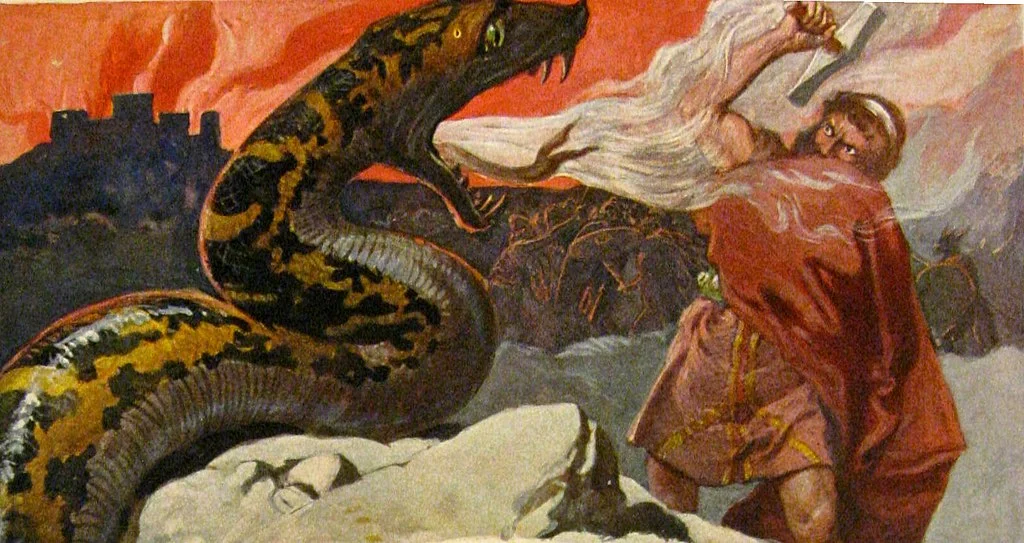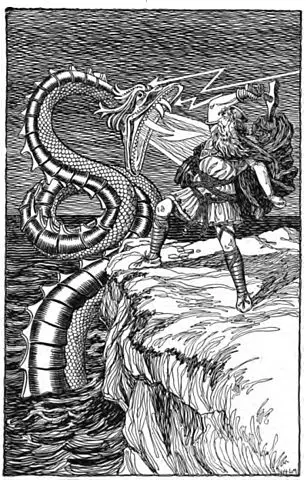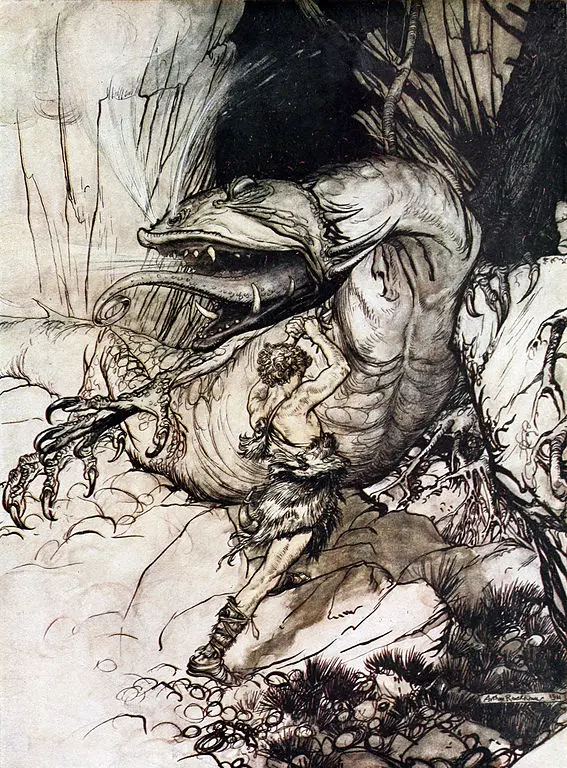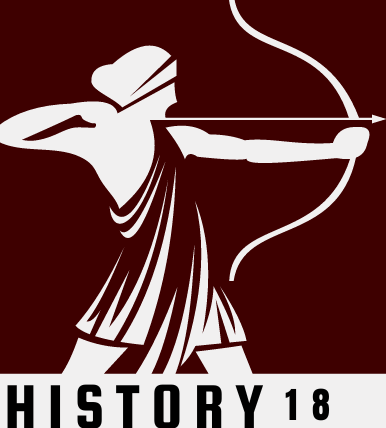Dragons have left a significant impact on our perception of these mystical beings today, thanks to their prevalence in Norse mythology. Throughout Viking tales and Scandinavian folklore, a myriad of dragons have been depicted over the ages. These Norse dragons are renowned for their immense power and magical attributes, often symbolizing chaos and destruction.

As a result, many Vikings adorned their longships, shields, and other accessories with dragon images to instill fear in the hearts of their adversaries. The legacy of these awe-inspiring creatures continues to captivate our imaginations and shape our understanding of dragons in modern times.
What are Viking Dragons Called in Old Norse?
In the Viking era, dragons were commonly referred to as “Dreki,” an Old Norse term encompassing sea monsters, sea serpents, and dragons. Interestingly, this name bears a resemblance to the Old English word “Drake,” which later influenced the modern term we now use to describe dragons.
Famous Dragons in Norse Mythology
Numerous stories of dragons have been passed down through generations across Scandinavia, weaving captivating tales into Norse mythology. Among the most renowned dragons in these sagas are Jormungandr, Nidhogg, and Fafnir. Each of these mythical creatures holds a unique and significant role in Norse lore.
Jormungandr
Jormungand, also known as the “Midgard Serpent,” is a mighty snake or dragon residing in the vast ocean surrounding Midgard, the visible world. Its colossal size is such that it forms a complete circle, encircling the entire realm of Midgard. Born as one of the three offspring of Loki and the giantess Angrboda, along with Hel and Fenrir, Jormungand holds a significant place in Norse mythology.

Among the deities, Thor stands out as a particular adversary of Jormungand. The Eddas recount two epic battles between them. In one notable encounter, Thor endeavors to fish for the serpent, but his attempts are thwarted when the giant Hymir intervenes out of fear that such an act might trigger Ragnarok, the apocalyptic event. As a result, Jormungand slips back into the depths of the ocean.
Nevertheless, fate has a destined confrontation in store, and when Ragnarok eventually arrives, Thor and the Midgard Serpent are destined to engage in a momentous battle. During this cataclysmic clash, both Thor and Jormungand are fated to meet their ultimate demise, each falling by the hand of the other.
Jormungand’s presence in Norse mythology suggests that it likely held significance in the religious beliefs of the original Germanic tribes. This is further supported by its existence in later pre-Christian religions of various Germanic branches. For example, continental Germans associated earthquakes with the movements of this Great Beast, a belief that persisted well into the Middle Ages.
Nidhogg
Nidhogg, known as the “Curse-striker” or “He Who Strikes with Malice,” holds a significant place in Norse mythology as the dragon that resides beneath the world-tree Yggdrasil, feasting upon its roots. This poses a great threat to the tree, which serves as the foundation for the Nine realms of the Norse cosmos.

Given Nidhogg’s destructive relationship with Yggdrasil, tells us that the dragon would play a prominent role in Ragnarok, the catastrophic event that leads to the downfall of the cosmos. Indeed, in the important Old Norse poem Völuspá, also known as the “Insight of the Seeress,” Nidhogg is depicted as emerging from beneath Yggdrasil during Ragnarok.
As the poem continues, Nidhogg’s influence expands to the realm of the afterlife. It is said to preside over a part of the underworld called Náströnd, translated as “The Shore of Corpses.” This place is believed to be a site of punishment for perjurers, murderers, and adulterers. However, this depiction of the afterlife involving moral retribution stands in contrast to the indigenous Norse worldview, and scholars believe it may have been influenced by Christian ideas infused into the poem.
Fafnir
Fafnir’s tale in Norse mythology stands apart from the stories of other dragons, as he was not initially a dragon and had no connection to Ragnarok. He was the son of a wealthy dwarf king named Hreiðmarr. However, events took a dark turn when Fafnir killed his father and stole a precious hoard of treasure, which had been given by the gods Odin, Loki, and Hœnir as compensation for the accidental slaying of Hreiðmarr’s son, Ótr.

Fearing the consequences of his actions, Fafnir fled to a remote place called Gnitaheath in the wilderness and underwent a dreadful transformation into a dragon to guard the stolen treasure.
Fafnir’s brother Regin forged a mighty sword for a hero named Siguro. He persuaded Siguro to kill Fafnir by hiding in a pit and attacking the dragon from below. Sigurð succeeded in slaying Fafnir and retrieved the stolen treasure. Regin then asked Sigurð to cook Fafnir’s heart for him.
Siguro accidentally burned his finger while cooking Fafnir’s heart, and when he sucked the blood to cool it down, he gained the ability to understand the language of birds. Listening to the birds’ conversation, Sigurð learns of Regin’s intentions of betraying him. Fearing betrayal, Sigurð decides to take matters into his own hands and ends up killing Regin as well.
Dragon Symbolism in Viking Art
In the Viking belief system, the cosmos operated on a cycle of birth and destruction, with dragons symbolizing the destructive aspect. These majestic creatures were depicted on buildings, carved into runestones, and crafted into exquisite jewelry. The dragon, or serpent, was likely seen as a symbol of strength and bravery, embodying powerful qualities valued by the Vikings.
In Norse mythology, dragons served as captivating storytelling devices, conveying vital lessons about greed and the cyclical nature of life. These mythical creatures held great significance within Viking communities. While they were often portrayed as fearsome beings, they also represented phenomenal power and offered insight into the delicate balance of the universe. The sight of a dragon foretold turbulent and intense times, leading Viking raiders to adorn their longships with dragon figures as they sailed to terrify the coastlines of Northern Europe.
The term “Dreki” was commonly used to describe specific types of Viking ships, including skeids and busse boats, which featured dragon heads intricately carved at their bows. These dragon embellishments were symbolic and striking. Some renowned ships even earned their own names based on their dragon designs.
One such legendary vessel was the “Ormen Lange,” reportedly constructed by King Olaf Tryggvason in the year 999. Inspired by the image of a mighty dragon with a massive serpent-like body, Olaf built one of the longest and most remarkable ships in Viking history.q
